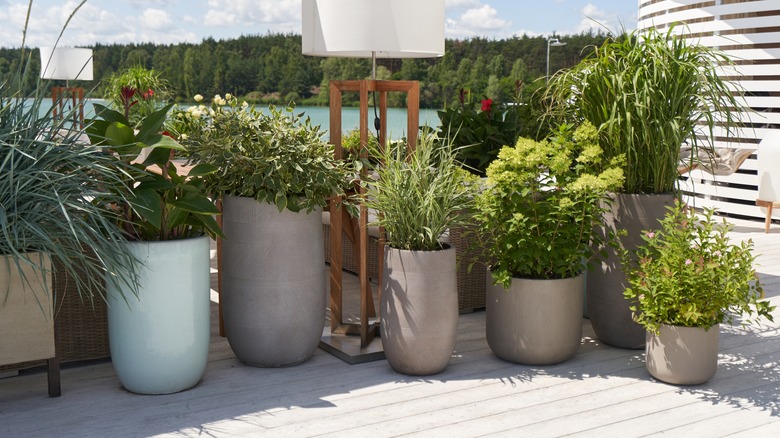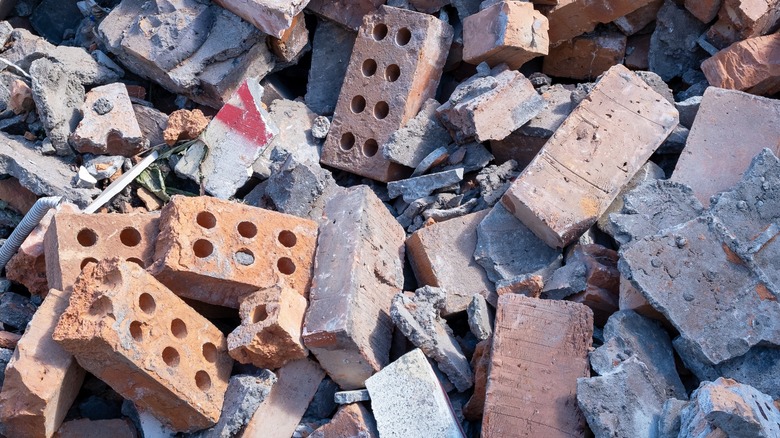The Insightful Reason Why Heavy Pot Fillers Could Actually Be Your Best Friend (And The Best Options)
Container gardening is great fun and offers tremendous versatility. You grow herbs in a few small pots by the back door, within easy reach of the kitchen. At the other end of the scale, you can use large pots as a simple way to transform your patio with flowers and plants. Once you've decided the size of the containers and the plants you want to put in them, there's the question of filler: a layer at the base of the pot that helps provide good drainage so your plants don't get waterlogged. It can also reduce the amount of potting mix you need to use.
There are plenty of lightweight options, and some people suggest you should fill your flowerpots with empty plastic water bottles. They certainly take up space and can be a good idea if you imagine needing to move the pot around. However, in larger planters, heavy pot fillers could actually be your best friend. The main reason is the stability they add. Tall pots and planters with a lot of plants in them can become unstable. Weight in the bottom will help prevent this. It's a particularly good idea if the pots are in a position where they might get bumped. Another good reason is to protect the pot and plants you've invested time and money in from opportunistic thieves. They might think twice if they try to lift your pot and risk putting their back out!
The best heavy pot fillers and some things to avoid
People have been using broken terracotta pots for probably as long as there have been pots to break. Other ceramics are equally good. Chunks of brick, pavers, roof tiles, and cinderblock also work. Being porous, they won't retain water that can damage roots and stunt growth. Large pebbles or rocks are okay, as long as they're big enough that they don't settle and form a solid layer. Some people suggest logs, but be careful. Make sure they haven't been treated with anything that could leach out into the soil. The same is true of the other materials mentioned. Don't use anything that may have come into contact with insecticide, weedkiller, or things like paint, engine oil, fuel, or other chemicals.
There are some common materials you should never use to fill the bottom of large planters, but you also need to be careful about the depth of pot filler you add. There are no strict rules, and there are numerous plants that only need a foot or so of soil to grow perfectly happily, but tall plants might have equally deep roots. It's a good idea to investigate the depth of soil your chosen plants require. If root systems are shallow, you can add plenty of void filler and save on compost, but just a few inches can be effective, even in large pots. Heavy pot fillers might be your best friend, but the most important thing is to provide for the needs of your plants.

